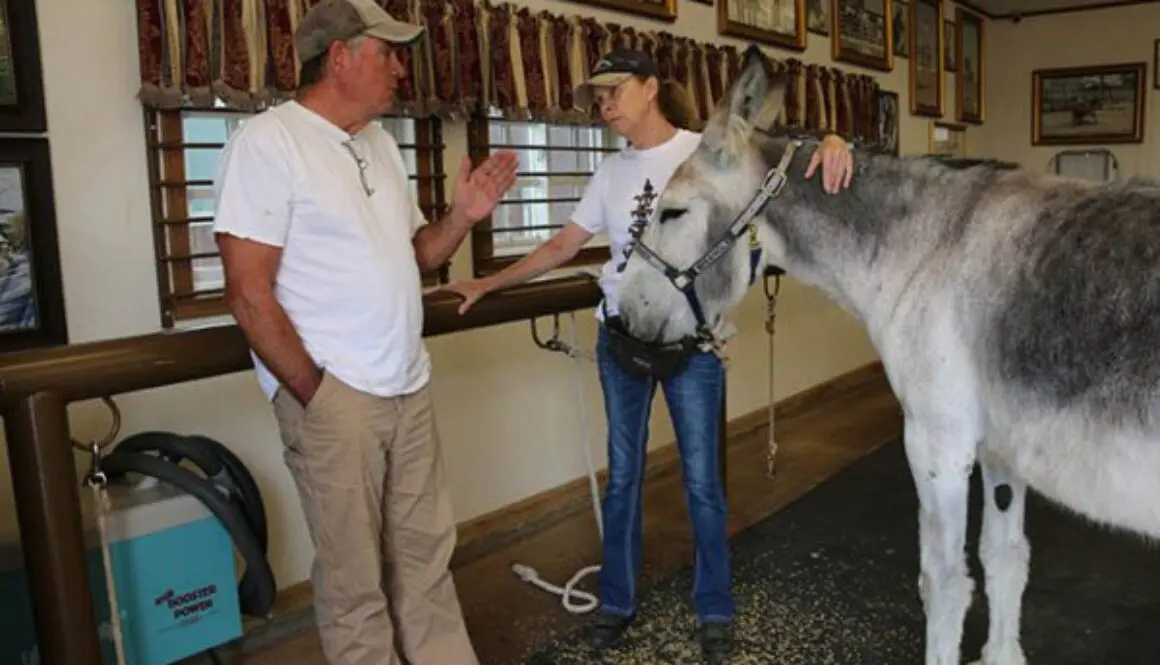Wrangler’s Donkey Diary: Sarcoid Treatment 7-20-18

Wrangler has almost completely shed out and during my last weekly grooming, I discovered a small sarcoid on his left forearm and decided to consult with my veterinarian, Greg Farrand. Wrangler munched in the fanny pack while we talked.
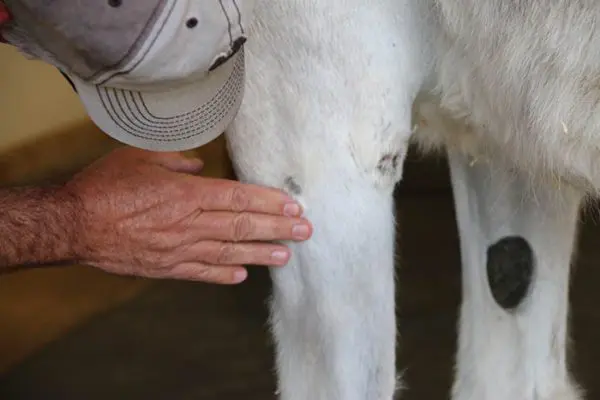
Dr. Farrand Carefully inspected the sarcoid and determined that it was not a candidate for removal because of it’s precarious location. There was no way to grab loose skin around it like there was with prior sarcoids on other animals.
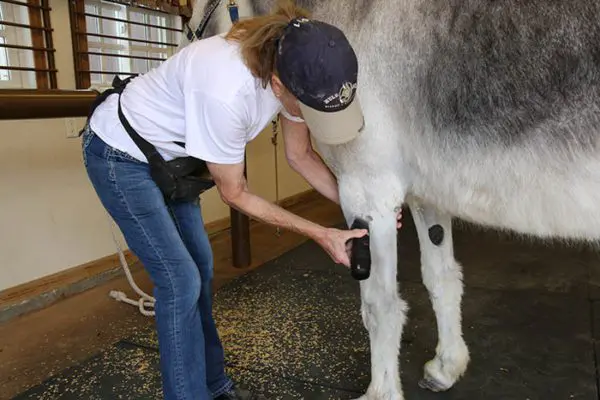
I shaved the area around the sarcoid so we could get a good look at it and so it would absorb the treatment the most efficiently.
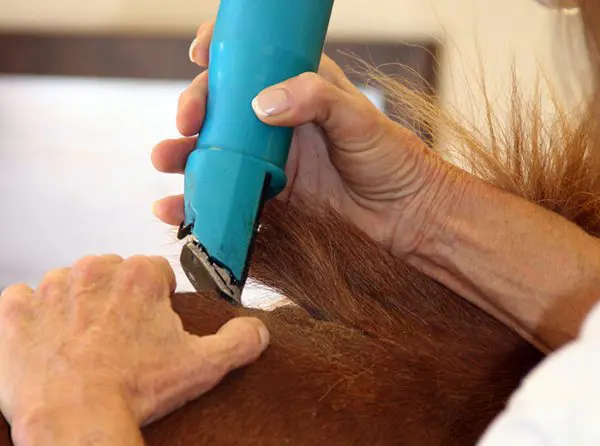
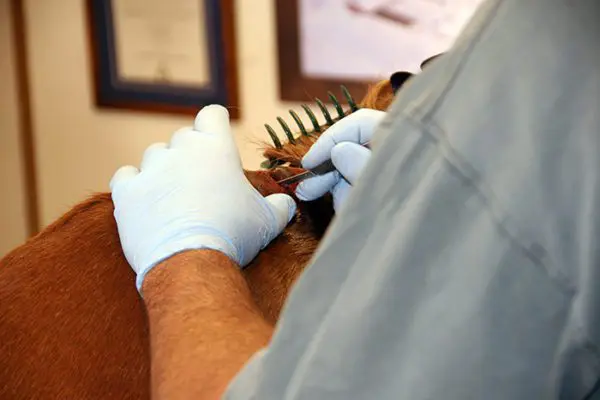
In 2011, Rock had a sarcoid on his neck in front of the withers where there was a lot of fatty tissue and the skin was loose enough to pull the sarcoid away from the body. So, we shaved his neck and removed the sarcoid with surgery. We then had it biopsied to find it was not a serious sarcoid (Better to be safe than sorry!) and it eventually just went away. In the eighties, if we removed a sarcoid, it would have had a follow-up of injections to be completely rid of it. in the nineties, veterinarians discovered another way to treat sarcoids that involved taking a piece of the biopsied sarcoid and reintroducing it as an implant in the neck to prompt an immunity response. Before he could remove one of three sarcoids the from Lucky Three Eclipse, he rubbed one and tore it open. Before we had the chance to biopsy one of the sarcoids for an implant, as if a miracle, his immune system was stimulated by HIM, kicked in and all three sarcoids just disappeared…and no, they were not anything else.
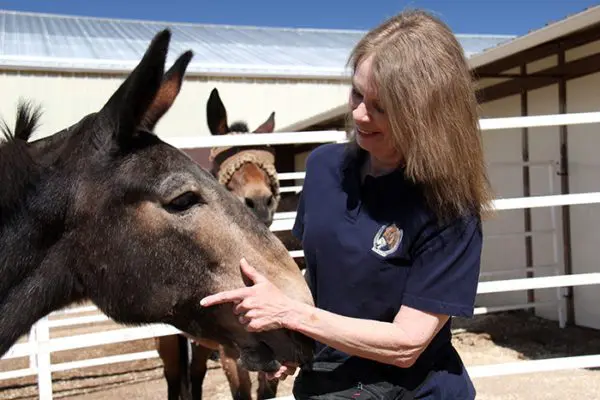
Lucky Three Cyclone also developed a sarcoid on his jaw which we successfully treated with surgery since it also was in a fatty area where we could pinch the skin around it easily. No follow up was necessary…just stitches removal.
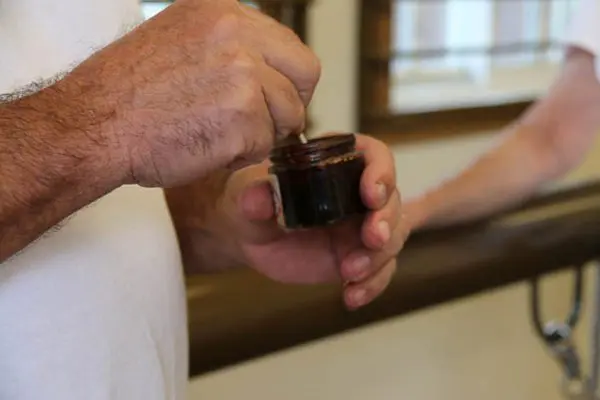
Since Wrangler’s sarcoid was in such a delicate area, we opted to use a topical approach with Xterra, applied with a Q-Tip.
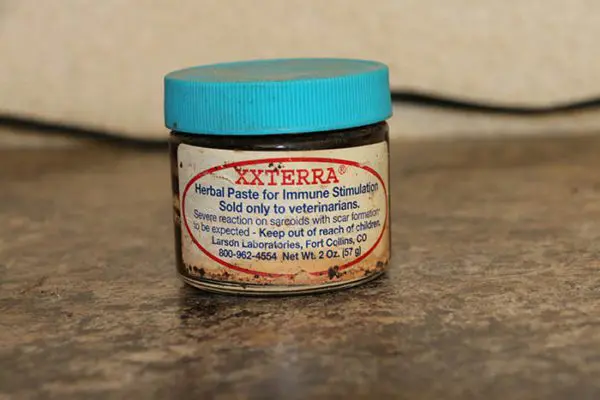
We will apply the Xterra once a day for a week, then stop for a week.
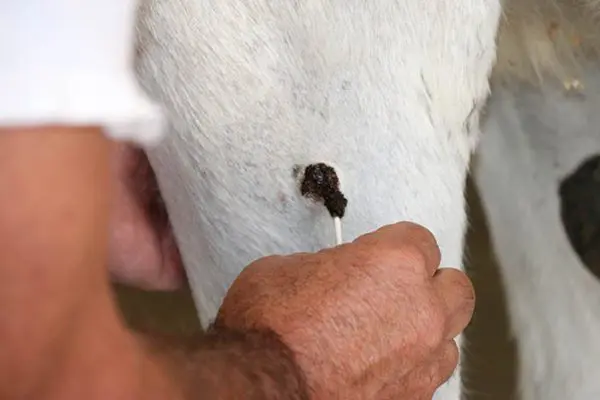
Then we will resume applying the Xterra for another week, stop after a week again and then see how it is progressing.
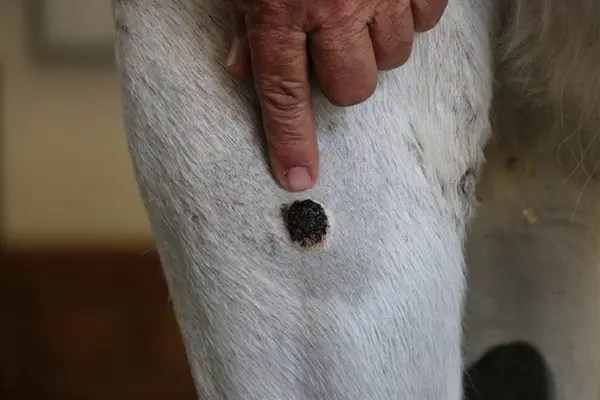
We will continue like this until it is gone. Xterra is surely a better way than the way we had to treat these in the eighties! Wrangler will be sure to keep you posted on his progress!

